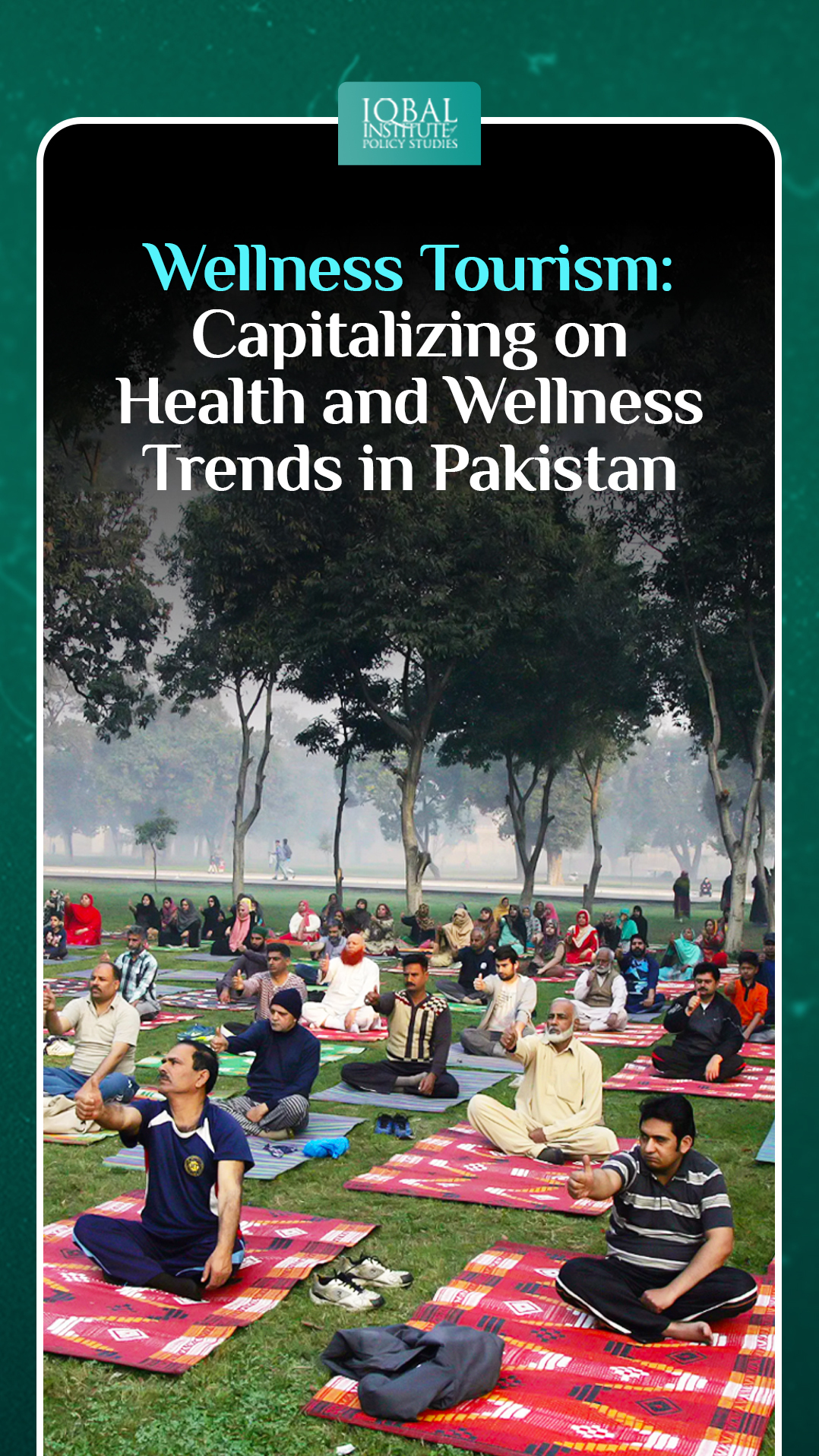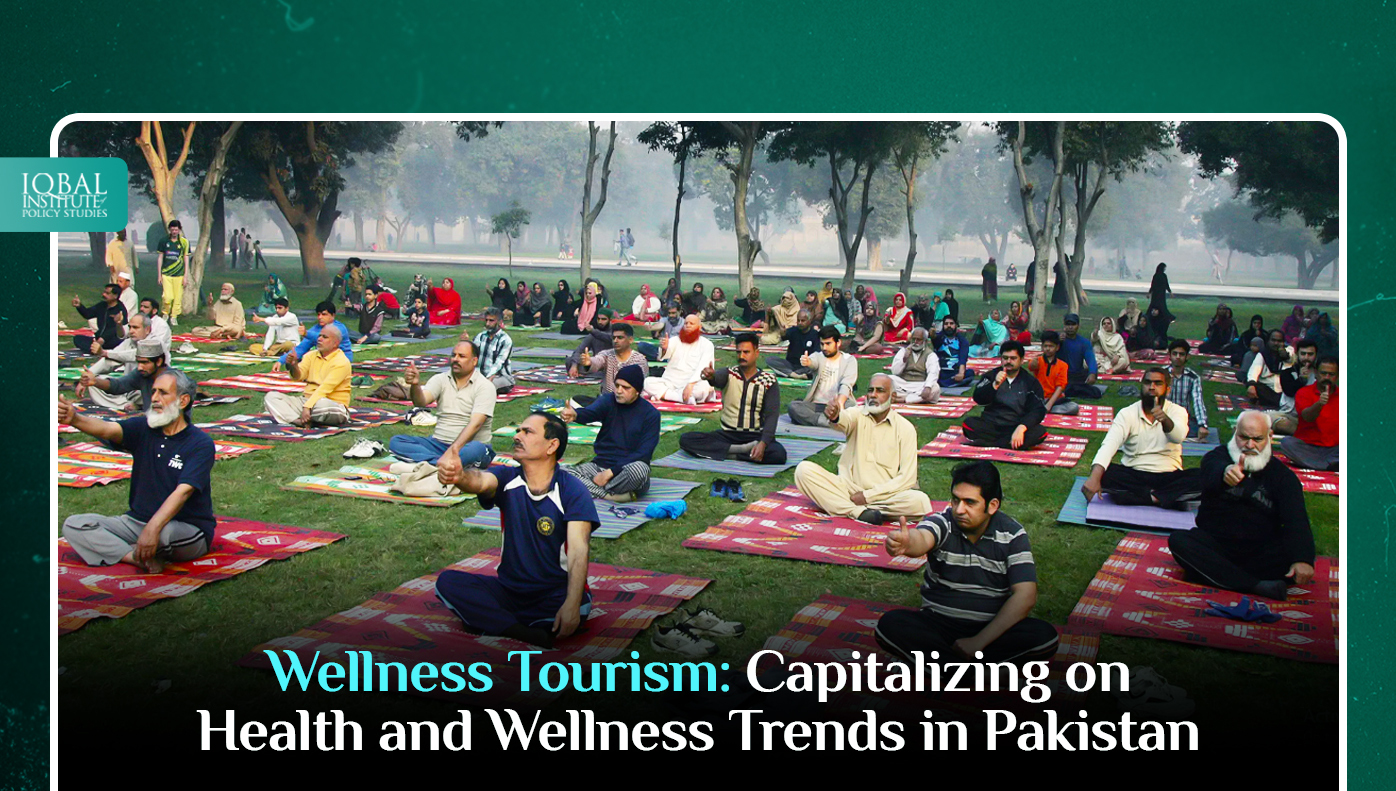In an era where the quest for well-being transcends geographical boundaries, Pakistan emerges as a hidden gem in the world of wellness tourism. Nestled between the Himalayas and the Arabian Sea, this South Asian nation offers a diverse tapestry of landscapes, cultures, and healing traditions that beckon to those seeking respite from the hustle and bustle of contemporary life.
The Diverse Landscape of Wellness Destinations
Northern Retreats
Northern Pakistan, with its crown jewel peaks like Nanga Parbat and Rakaposhi, sets the stage for wellness retreats amidst the serenity of Hunza and Swat valleys. Purpose-built resorts harmoniously integrated with nature can provide a haven for yoga retreats, meditation programs, and wellness workshops.
The crisp mountain air, pristine landscapes, and breathtaking views make the northern regions of Pakistan an ideal setting for wellness tourism. Imagine waking up to the sight of snow-capped peaks, surrounded by the tranquility of nature. This immersive experience not only rejuvenates the body but also nourishes the soul.
The region, with its rich cultural tapestry and warm hospitality, presents an opportunity for wellness resorts to seamlessly blend modern amenities with the traditional charm of the surroundings. Stone-clad architecture, inspired by local craftsmanship, can house spa facilities, meditation halls, and wellness retreat spaces. The goal is to create an environment that not only pampers the senses but also respects and reflects the cultural heritage of the land.
Ayurveda and Traditional Healing
Pakistan’s rich heritage includes ancient healing practices such as Ayurveda and local herbal medicine. Wellness seekers can immerse themselves in spa resorts that seamlessly blend modern amenities with traditional healing methods, harnessing the therapeutic power of indigenous herbs and time-honored practices.
Imagine a spa treatment using locally sourced herbs, carefully chosen for their healing properties. Aromas of indigenous flowers infuse the air, creating a sensory experience that goes beyond mere relaxation. Yoga and meditation sessions guided by practitioners well-versed in ancient traditions further enrich the wellness journey.
To maximize the impact, these wellness resorts could collaborate with local communities, tapping into their knowledge of traditional healing practices. This not only adds authenticity to the wellness programs but also ensures the preservation of cultural heritage. By involving the local population, wellness tourism becomes a collaborative effort, benefiting both the visitors and the communities.
Cultural and Historical Wellness Journeys
Historical sites like Mohenjo-Daro and Taxila can be transformed into immersive wellness experiences. Guided tours intertwining the exploration of ancient civilizations with mindfulness practices, meditation, and spa treatments create a unique fusion of history and well-being.
The echoes of ancient civilizations resonate through the corridors of historical sites. Combining this historical richness with wellness activities creates a unique offering for visitors. Picture a morning meditation session amidst the ruins of an ancient city, where the sunrise paints the stones with hues of gold and orange. The juxtaposition of history and mindfulness fosters a deep connection between the past and the present.
Guided tours led by knowledgeable historians and wellness experts can provide insights into the historical significance of these sites while offering techniques for relaxation and self-discovery. Wellness, in this context, becomes a journey through time, allowing visitors to not only witness history but also to connect with it on a profound level.
Pioneering Wellness Tourism Components
Spa and Wellness Resorts
Strategic development of world-class spa and wellness resorts can be a game-changer. These havens can offer a spectrum of services, from specialized spa treatments and fitness programs to curated healthy cuisines, providing an all-encompassing wellness experience.
Creating a world-class spa and wellness resort involves meticulous planning and attention to detail. The architecture should seamlessly blend with the natural surroundings, offering a sense of harmony and tranquility. Spacious rooms with panoramic views, private meditation gardens, and state-of-the-art spa facilities contribute to an immersive experience.
The spa menu can showcase a fusion of traditional healing practices and modern wellness techniques. From Ayurvedic massages to hydrotherapy sessions, each treatment is designed to cater to the specific needs of the guests. Wellness packages, including personalized fitness programs and nutritional counseling, add a holistic dimension to the offerings.
The culinary aspect of these resorts is equally crucial. Wellness-inspired menus, crafted by nutritionists and seasoned chefs, highlight local, organic ingredients. Cooking classes and workshops can educate guests about the nutritional value of different cuisines, encouraging a mindful approach to eating.
Adventure and Wellness Fusion
For the adventure enthusiast seeking wellness, a fusion of thrilling activities and rejuvenating practices presents an unparalleled experience. Imagine trekking through the rugged landscapes of the Karakoram Range, culminating in serene yoga and meditation sessions against the backdrop of snow-capped peaks.
The marriage of adventure and wellness opens up a world of possibilities. Treks tailored to different fitness levels, guided by experienced mountaineers, can lead to hidden valleys where nature unfolds in all its glory. These adventures can be interspersed with wellness activities, providing a perfect balance of adrenaline and relaxation.
Camping under the starlit sky, surrounded by the majestic peaks of the Karakorams, becomes an experience in itself. Bonfire sessions with guided meditation, led by seasoned wellness experts, create an atmosphere of serenity in the heart of nature. This fusion of adventure and wellness is not just a journey for the body but a transformative experience for the mind and spirit.
Culinary Wellness
Pakistan’s diverse and wholesome cuisine becomes a cornerstone of wellness tourism. Cooking classes, organic farm visits, and culinary events showcasing the nutritional richness of local delicacies contribute to a holistic wellness journey.
The culinary aspect of wellness tourism in Pakistan extends beyond the dining table. It’s about understanding the origin of ingredients, embracing local flavors, and learning to make mindful food choices. Cooking classes led by expert chefs can unravel the secrets of Pakistani cuisine, emphasizing the balance of flavors and the health benefits of traditional dishes.
Organic farm visits offer a hands-on experience of sustainable agriculture. Guests can participate in the cultivation process, gaining insights into the journey from farm to table. This connection with the source of food enhances the appreciation for nutrition and fosters a sense of responsibility towards sustainable practices.
Culinary events can showcase the diversity of Pakistani cuisine, with themed dinners highlighting regional specialties. Nutritionists can provide insights into the health benefits of different ingredients, encouraging guests to make informed choices. In this way, culinary wellness becomes a journey of exploration, education, and gastronomic delight.
Navigating Challenges and Seizing Opportunities
Infrastructure Development
Investment in infrastructure, including road networks and transportation, is crucial. Creating accessible routes to wellness destinations ensures a seamless experience for visitors.
The success of wellness tourism in Pakistan hinges on accessibility. Infrastructure development becomes a priority, encompassing road networks, transportation facilities, and accommodation options. Improving connectivity to wellness destinations ensures that visitors can embark on their well-being journey without the hindrance of logistical challenges.
Roads leading to mountain retreats and historical sites need to be well-maintained and properly signposted. Transportation options, including eco-friendly modes such as electric vehicles or shared shuttles, can further enhance the sustainability of wellness tourism. Accommodation facilities, whether they are luxury resorts or eco-friendly lodges, should meet international standards to provide a comfortable and enriching experience.
Beyond physical infrastructure, the digital landscape is equally crucial. Online platforms and apps can streamline the booking process, provide information about wellness programs, and offer virtual tours of wellness destinations. Embracing technology ensures that wellness tourism in Pakistan is not only accessible but also aligned with the expectations of the modern traveler.
Promotion and Education
A comprehensive marketing strategy is essential to showcase Pakistan’s potential as a wellness tourism destination. Educational programs can enlighten local communities about the benefits and sustainable practices associated with wellness tourism.
Promoting wellness tourism in Pakistan requires a multi-faceted approach. Digital marketing campaigns, social media engagement, and collaborations with travel influencers can create a buzz in the global travel community. Highlighting the unique features of wellness destinations, from the therapeutic properties of local herbs to the spiritual significance of historical sites, captures the imagination of potential visitors.
Educating local communities is equally important. In many cases, the success of wellness tourism depends on the involvement and support of the local population. Workshops and seminars can provide insights into the economic opportunities associated with wellness tourism, encouraging local entrepreneurs to invest in related ventures.
Environmental conservation and sustainable practices should be at the forefront of promotional efforts. Emphasizing the importance of preserving natural habitats, supporting local communities, and minimizing the ecological footprint of wellness tourism builds a positive image and attracts conscious travelers.
Public-Private Collaborations
Collaborations between the government, private sector, and local communities are paramount. Incentivizing private investment in wellness infrastructure while ensuring community involvement fosters sustainable growth.
The synergy between public and private sectors, along with the active participation of local communities, forms the backbone of a thriving wellness tourism industry. Government incentives can encourage private investors to develop wellness resorts, spa facilities, and eco-friendly accommodations. Tax breaks, grants, and partnerships can stimulate growth and innovation in the sector.
Collaboration with local communities is not just about economic benefits but also about cultural preservation. Engaging local artisans, craftsmen, and service providers ensures that wellness tourism is an inclusive and mutually beneficial endeavor. This collaborative approach also enhances the authenticity of wellness experiences, allowing visitors to engage with the rich cultural tapestry of Pakistan.
Training programs and skill development initiatives can empower local communities to actively participate in the wellness tourism value chain. From guiding wellness tours to providing authentic cultural experiences, the involvement of locals adds depth and authenticity to the offerings.
Conclusion
As Pakistan embarks on the journey of wellness tourism, the vision extends beyond economic gains. It is a commitment to promoting global well-being, a tapestry woven with threads of health, harmony, and a journey to the soul.
The potential of wellness tourism in Pakistan goes far beyond the surface. It is an opportunity to showcase the nation’s natural beauty, cultural richness, and traditional practices on the global stage. The immersive experiences crafted for wellness seekers not only cater to the evolving preferences of travelers but also contribute to the sustainable development of tourism in the region.
In the tapestry of global wellness tourism, Pakistan’s thread is distinctive, combining the grandeur of mountains, the wisdom of ancient healing practices, and the richness of cultural heritage. It is a thread that invites travelers to not just visit but to embark on a transformative journey—one that nurtures the body, mind, and spirit.
As the sun sets behind the towering peaks of the Karakorams and the echoes of ancient civilizations resonate through historical sites, wellness tourism in Pakistan stands at the threshold of a new era. It is an era where well-being is not just a destination but an immersive experience—a journey that unfolds the layers of nature, culture, and self-discovery. The promise is not just a sojourn in Pakistan; it is an odyssey of holistic well-being.
This article is written by Radma Nouman. Radma is a research analyst at the Iqbal Institute of Policy Studies (IIPS).



Leave a Reply